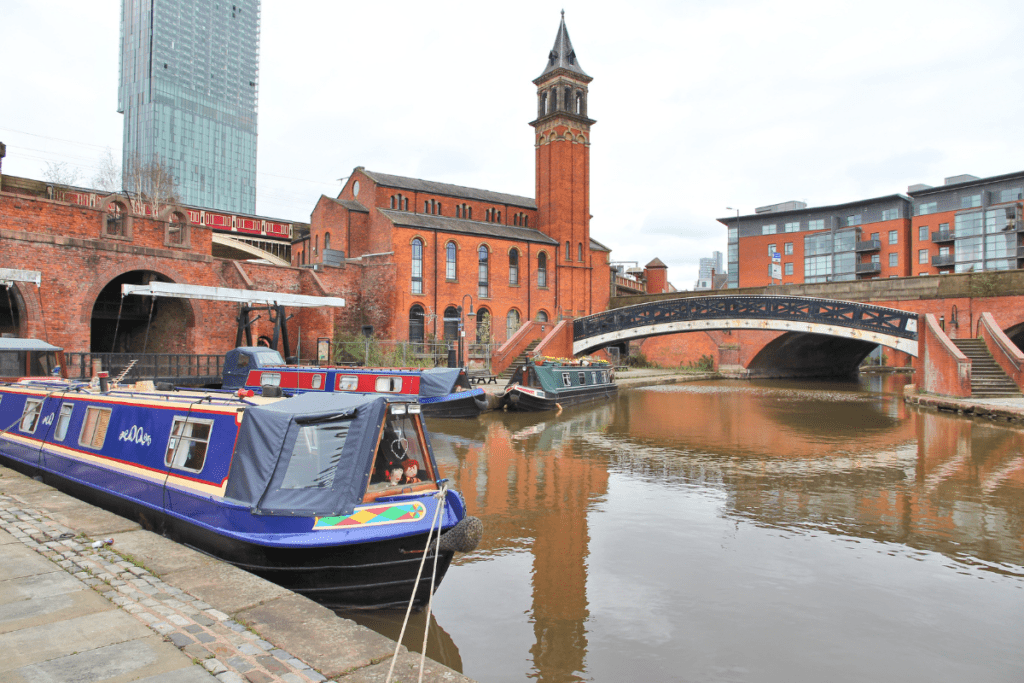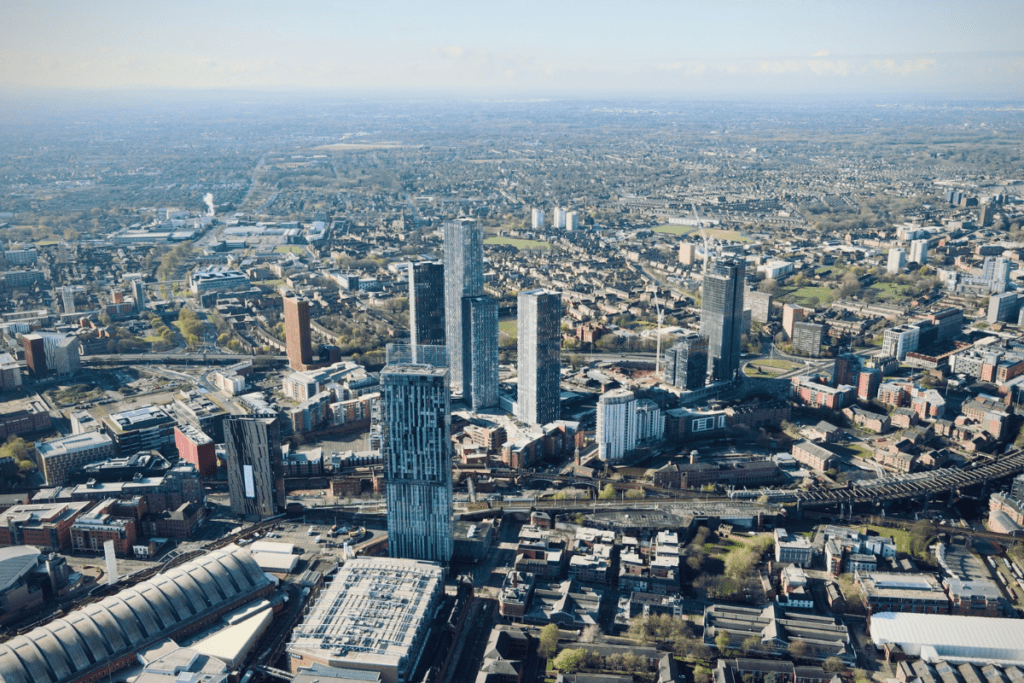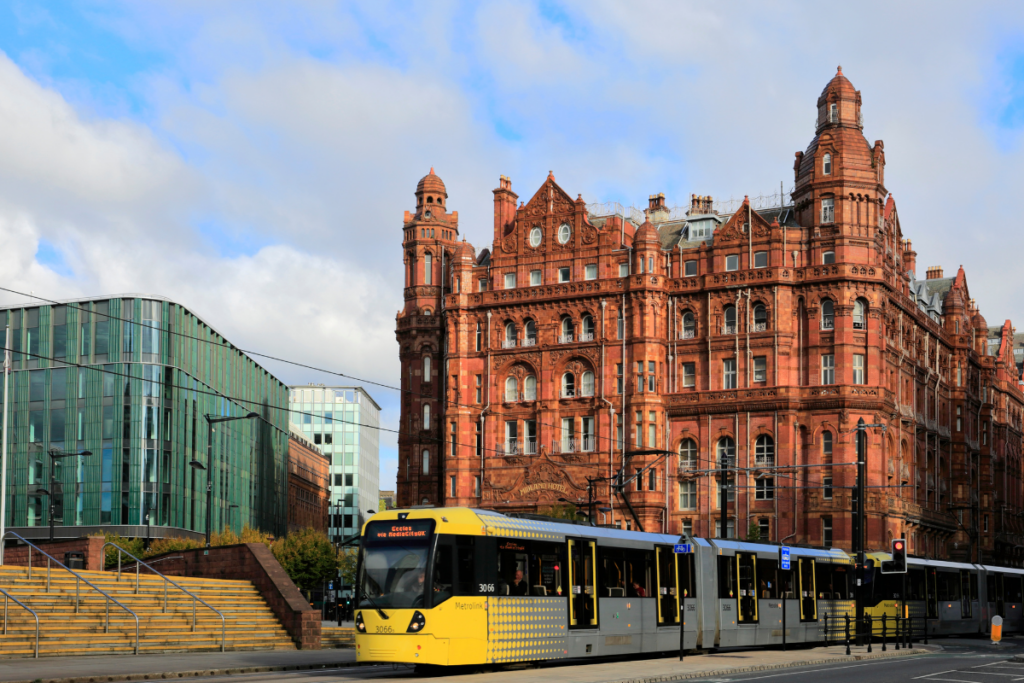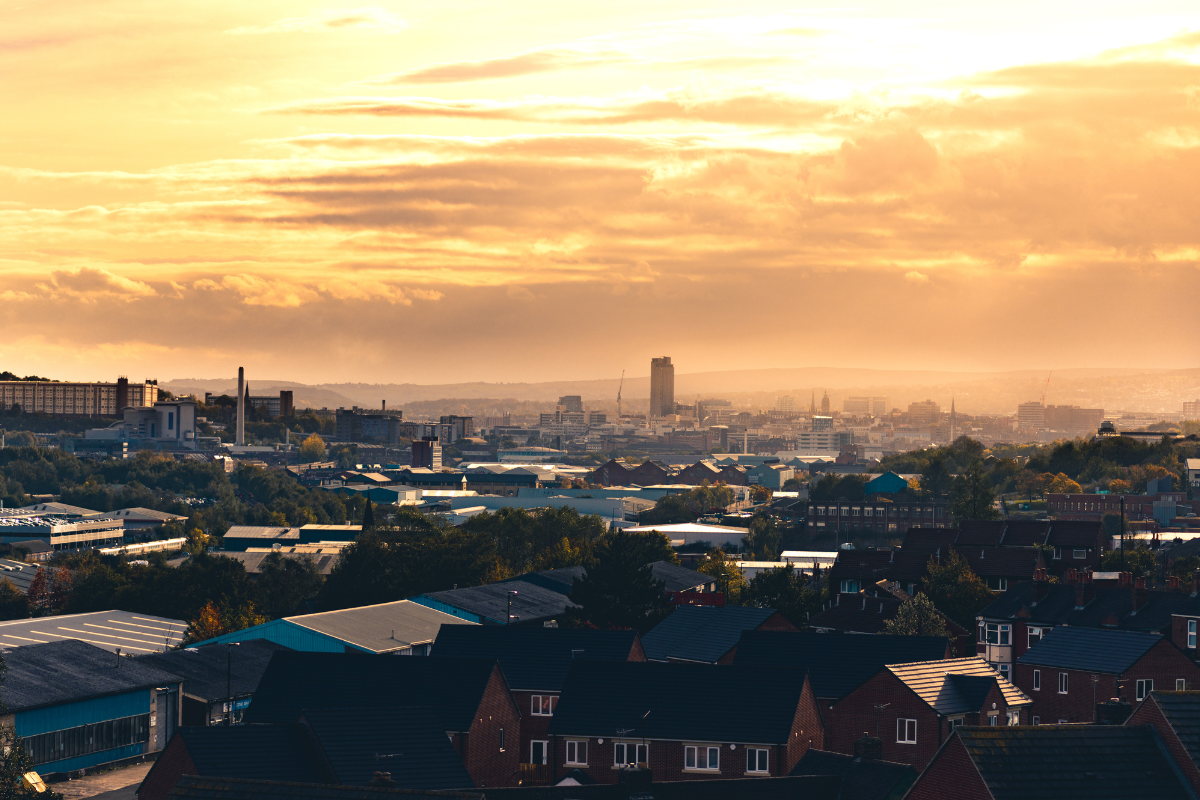Manchester was at the forefront of the Industrial Revolution. In fact, it’s considered the world’s first industrial city. Since the 18th century, it has continued spearhead technology, transformation and continuous development. But what does this mean for the world of properties and surveying? Manchester’s industrial heritage has played a pivotal role in shaping modern building surveying practices. We’ve explored some of these below, as well as how the how the Industrial Revolution has shaped best practices used by building surveyors in Manchester and around the UK today.
More on the industrial legacy of Manchester

The Industrial Revolution left an indelible mark on Manchester’s landscape, with the construction of iconic structures such as cotton mills, warehouses, and railway viaducts. Many of these date back to the just before or during the Victorian era, such as Dale Street Warehouse (1806), Watts Warehouse (1856) and Great Northern Warehouse (1885). These edifices not only bear witness to the city’s historical significance but also provide a unique backdrop for modern building surveying practices. As Manchester undergoes continuous regeneration, building surveyors must reconcile the need to preserve its industrial heritage while addressing the demands of modern urban living.
The challenges in building surveying in Manchester
Manchester’s industrial past presents unique challenges for building surveyors, who must navigate a complex web of factors when conducting their work.
Conservation and adaptive reuse
The city’s historic buildings, such as the mills and warehouses, have become architectural icons, requiring surveyors to adopt a sensitive approach to their preservation. Adaptive reuse, the process of repurposing old structures for new uses, is a popular strategy in Manchester. Surveyors must balance the need for modernisation with the protection of the buildings’ historical integrity.
Structural integrity
Manchester’s industrial buildings often feature distinctive design elements, such as cast-iron columns and timber beams. Surveyors must thoroughly assess these structures for signs of decay and deterioration, ensuring their continued safety and stability. This often necessitates the use of advanced surveying techniques, such as laser scanning and 3D modelling, to capture the intricacies of these historic buildings accurately.
Asbestos and hazardous materials
The widespread use of asbestos and other hazardous materials in Manchester’s industrial buildings poses a significant risk to public health. Building surveyors must adhere to strict safety regulations when assessing these structures, employing rigorous testing and monitoring procedures to mitigate potential hazards.
Opportunities for innovation

Despite the challenges posed by Manchester’s industrial heritage, the city’s unique architectural landscape also presents several opportunities for innovation in building surveying practices.
Digital surveying techniques
The advent of digital technology has revolutionised the field of building surveying, allowing for more accurate and detailed assessments of historic structures. Techniques such as laser scanning, photogrammetry, and Building Information Modelling (BIM) enable surveyors to capture complex data with precision, facilitating more informed decisions regarding conservation and redevelopment.
Sustainable development
The push for sustainable development in Manchester has spurred surveyors to consider environmentally friendly building practices, such as repurposing existing structures and utilising energy-efficient materials. This not only aligns with the city’s commitment to reducing its carbon footprint but also helps preserve its industrial heritage for future generations.
Collaboration with heritage organisations
Building surveyors in Manchester frequently collaborate with heritage organisations, such as Historic England and the Manchester Conservation Areas and Historic Buildings Panel, to ensure that the city’s historic structures are preserved and maintained. This collaborative approach fosters a greater understanding of Manchester’s industrial past and ensures that surveyors can strike a balance between preservation and progress.
The Industrial Revolution’s influence on best practices in Manchester’s building surveying
The relationship between Manchester’s industrial heritage and the city’s contemporary building surveying practices is undeniably intertwined. As a result, building surveyors in Manchester have developed several best practices influenced by its industrial heritage. These practices account for the need to ensure that the city’s historic structures are preserved while accommodating the needs of a modern metropolis.
A key aspect of these best practices is the comprehensive knowledge of industrial architecture that Manchester’s surveyors possess. This in-depth understanding enables them to identify and assess the unique architectural features associated with the city’s industrial past. This expertise is crucial for ensuring that any interventions or alterations are carried out sensitively, maintaining the historical integrity of the buildings.
Another significant influence of the Industrial Revolution on building surveying best practices in Manchester is the focus on structural health monitoring. Surveyors are acutely aware of the potential issues that can arise from ageing industrial buildings, such as foundation settlement, corrosion, and moisture ingress. As a result, they employ a range of advanced techniques and tools to monitor these structures regularly, identifying potential problems early and implementing appropriate remedial measures.
Manchester’s surveyors also place a strong emphasis on sustainability and energy efficiency in their work, reflecting the city’s commitment to environmental responsibility. By retrofitting historic industrial buildings with modern, energy-efficient systems and materials, surveyors can breathe new life into these structures while minimising their environmental impact. This approach not only preserves Manchester’s industrial heritage but also supports the city’s broader sustainability goals.
In addition, collaboration and communication are central to the best practices employed by building surveyors in Manchester. By working closely with heritage organisations, local authorities, and other stakeholders, surveyors can ensure that their work aligns with the broader goals of preserving the city’s historic fabric. This collaborative approach fosters a shared understanding of Manchester’s industrial past and helps surveyors to balance the competing demands of preservation and progress.
Building surveys in Manchester
Building surveys are an important and effective way to determine whether properties are in good condition, or may need some repair work. It’s always good to get a RICS Chartered Surveyor to assess your building, ensuring the evaluation and report are completed to the highest standard. If you’re in need a building survey in Manchester, contact CJ Bloor today.




